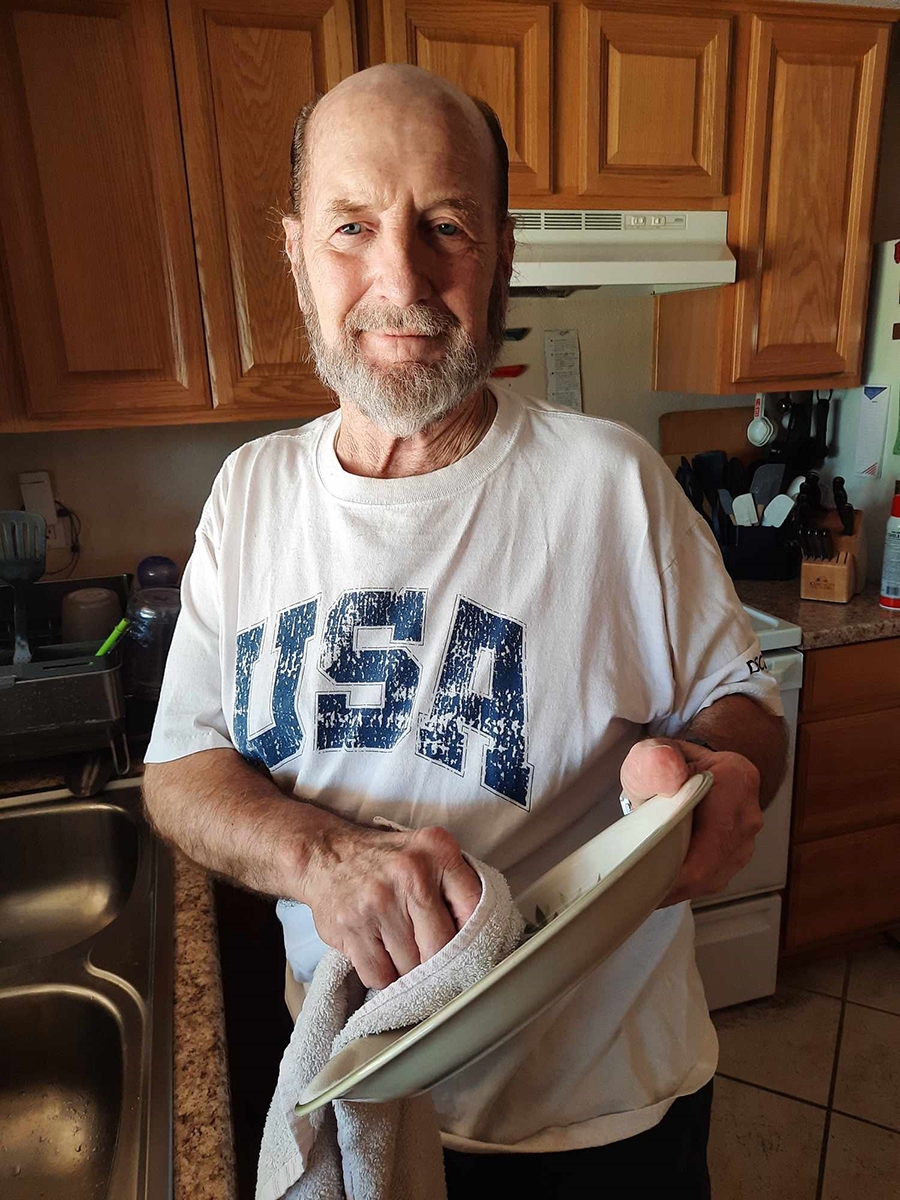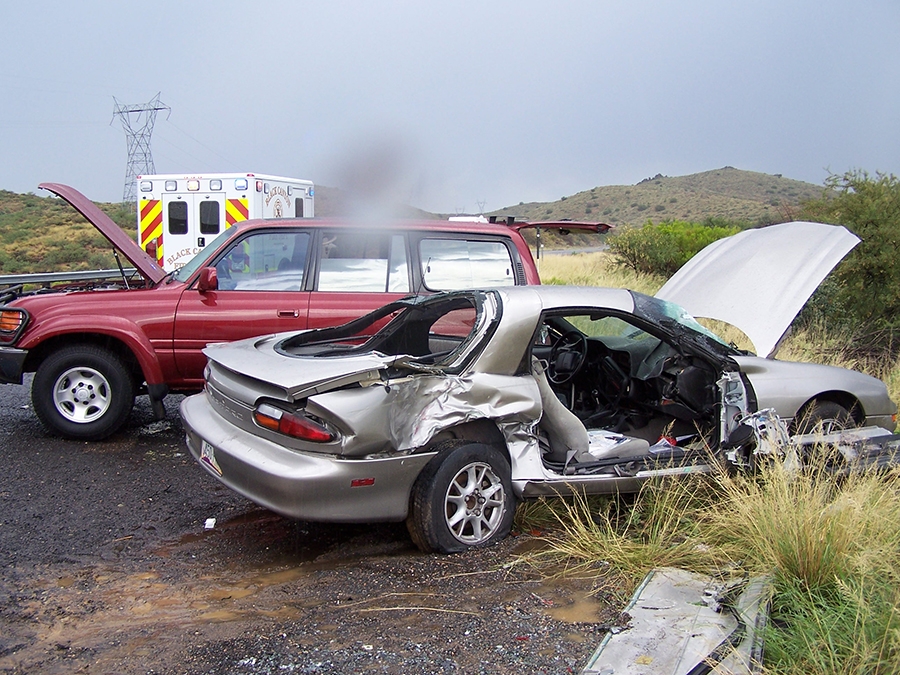In Sickness and in Health: A TBI Love Story
This is a love story.
But be warned: This isn’t your typical tale of romance. It’s one with a twist you never see coming but will never forget.
Roger Soden was a career military man. Just out of high school and his first marriage already in the rear-view mirror, the 18-year-old Tucson native decided it was time to join the Army. He enjoyed being stationed all over the country but wanted more custody of his young daughter. Fortunately, he was able to get transferred to Fort Huachuca, AZ, near Tucson. After his tour ended, he joined the National Guard and enrolled in Officer Training School. Eventually rising to the rank of Lt. Col., 153rd Field Artillery Brigade, he was in uniform for a total of 34 years.
While he may not have all the answers, Roger plans to forge ahead with faith. “I don’t have any idea why any of this happened or when it will be completed, but while I’m going through it, I’m going to have joy.”
In Sickness and in Health: A TBI Love Story
This is a love story.
But be warned: This isn’t your typical tale of romance. It’s one with a twist you never see coming but will never forget.
Roger Soden was a career military man. Just out of high school and his first marriage already in the rear-view mirror, the 18-year-old Tucson native decided it was time to join the Army. He enjoyed being stationed all over the country but wanted more custody of his young daughter. Fortunately, he was able to get transferred to Fort Huachuca, AZ, near Tucson. After his tour ended, he joined the National Guard and enrolled in Officer Training School. Eventually rising to the rank of Lt. Col., 153rd Field Artillery Brigade, he was in uniform for a total of 34 years.
While he may not have all the answers, Roger plans to forge ahead with faith. “I don’t have any idea why any of this happened or when it will be completed, but while I’m going through it, I’m going to have joy.”
During this time, Roger accumulated academic recognition – a B.A. in business and M.A. in organization management from the University of Phoenix, both of which helped him rise through the ranks.
At the same time, he worked for the Arizona Department of Transportation (ADOT) as a mechanic shop supervisor. By this time, he had also remarried, but when that relationship ended in 1998, he moved to Mesa, where he began a three-year stint with the Arizona National Guard as Deputy Director for Project Challenge, a national program created to help at-risk students who had dropped out of high school. He then became a hazmat coordinator under the auspices of Arizona State Emergency Services.
Nine years later, Roger’s love story began when he met Margarita (Margie) De Leon. Coincidentally due to a tangled interweaving of marriages and divorces, both were unrelated grandparents to several children. Initially, they would go to Little League games to cheer on their grandkids, then eventually started meeting up without the “supervision” of other family members. Soon thereafter, they started talking about marriage.
After a few months of discussing their future together, Roger was gung-ho, but Margie had her doubts. Although she had said yes, she started pulling back, saying she needed her space and wasn’t sure the timing was right, if at all.
One Wednesday, several months later, Roger received a call at work. It was Margie. She asked him what he was doing that weekend, because it would be a great day to get married. On Thursday, they happily went to the courthouse to get their license, and on Friday, they were married. At the time, no one knew except for the HR department at Roger’s office (he is nothing, if not practical).
On Saturday, July 25, 2009, they jumped in their car and excitedly headed to a casino near Flagstaff Margie liked. After everything they had been through, they were going to start this marriage off right – their way.
They never made it to the casino.
Neither Roger nor Margie remembers the accident. However, they both sustained traumatic brain injuries (TBIs) as a result. Roger’s skull was crushed and required a steel plate. In addition to experiencing many of the psychological aftermath of such a traumatic incident, like depression and memory loss, his eye socket was fractured, and his collarbone broken. He spent a month recovering in the hospital, then re-learned to walk again with physical therapy, and continued out-patient therapy as he returned to working full-time at the Arizona State Emergency Response Commission.
His employer’s acceptance and patience were a textbook example of how to reintegrate a survivor of brain injury into the workforce. By a twist of fate, Roger had submitted paperwork for their marriage earlier in the year, but when Margie called off the wedding, he told HR to shred it. Instead, they held on, “just in case,” then officially added her to Roger’s insurance the Monday following the accident. This way, they made sure his new wife was totally covered.
Margie’s outcome was much different: She become unrecognizable from her former self, with no memory of the wedding, who Roger is (“Are we married?”), can’t talk, doesn’t know where she is, and can’t walk by herself. Roger describes her as “a baby in a big body. I have to do everything.”
Roger never wavered and continues to be clear-eyed about the responsibility of caring for his bride:
“A baby can cry and let you know if it is hungry or needs to be changed. Margie cannot do that,” he says. “I dress her, and take her to the bathroom, and change her diapers.
Additionally, Roger makes sure Margie gets her medications to prevent seizures and panic attacks, and manage her insomnia. Mealtimes too, have become more of a challenge. He explains, “Since we had to take her teeth out, I puree all of her food. I take TV dinners and blend them all together, then feed her. I also feed her yogurt and applesauce.”
His love for his wife is palpable. While others might be reluctant to take on virtually every function for a spouse, especially when their pre-brain injury married-life spanned only a single day, Roger sees this as a blessing. This perspective is a hallmark of his faith. He is currently working toward a bachelor’s degree at Westcoast Bible College and Seminary, after which he intends to earn master’s and doctrine degrees. Roger says the president of the college told him God told him to give Roger a scholarship.
Roger is grateful for this new path forward and believes there is purpose in tragedy. “God blessed me with Margie and there is a reason. I love her and will take care of her because it is part of God’s plan,” he shares. “I don’t complain because when you complain you remain, and when you praise, you raise.”
Speaking of blessings, another one of Roger’s is his terrific sense of humor and humility. He says he loves her to pieces and she’s a blessing to him. “You might even say I have the perfect wife—she never yells or complains,” he jokes, though he’s quick to add he would trade anything for her to be able to do that.
Although Roger continues to experience the effects of his own brain injury, he has welcomed the support he has received from organizations like the Brain Injury Alliance of Arizona. “They really have helped me through this. I learned that most people with brain injury don’t realize they’re injured. That’s why if you think you have a brain injury, you need to contact them,” he urges.
Roger’s enthusiasm for the Alliance is due in part to the fact that they connected him with Tempe Adult Day Health Care, which helps him care for Margie twice a week, providing him with much-needed respite. Like many survivors of brain injury, he wasn’t previously aware of available community resources to help ease the journey for him and his wife.
Now that he’s in the know, Roger had made a habit of making regular donations and promoting awareness of the vital work done by the Brain Injury Alliance.
“I started going to their support groups and they were a godsend. That’s why I donate to them every month,” he affirms. “It may not be much, but what they do is so important, with all those free programs and community resources, I have to do my part. They know what they’re doing.”
Carrie Collins-Fadell, CEO of the Brain Injury Alliance, says Roger’s story is inspiring. “Like many people with brain injury, here is a man who is not only struggling to recover but has taken on another survivor’s battle. I don’t know where he gets the strength; I’m just very proud we can help in any way.”
While he may not have all the answers, Roger plans to forge ahead with faith. “I don’t have any idea why any of this happened or when it will be completed, but while I’m going through it, I’m going to have joy.”
ABOUT BRAIN INJURY ALLIANCE OF ARIZONA
The Brain Injury Alliance of Arizona (BIAAZ) is the only statewide nonprofit organization dedicated to improving the lives of adults and children with all types of brain injuries through prevention, advocacy, awareness and education. BIAAZ also houses the Arizona Brain Health Resource Center, a collection of educational information and neuro-specific resources for brain injury survivors, caregivers, family members and professionals.
What began in 1983 as a grassroots effort has grown into a strong statewide presence, providing valuable life-long resources and community support for individuals with all types of brain trauma at no charge.
The Brain Injury Alliance of Arizona:
- Works with Congressional Brain Injury Task Force
- Houses Arizona Brain Health Resource Center
- Hosts Statewide Opioid Use Disorder & Cognitive Impairment Workgroup
- Has Statewide Opioid Use Disorder & Cognitive Impairment Response team with peer support, training, and family wraparound services
- Facilitates Brain Health Advisory Council
- Manages statewide Neuro Info-Line: 888-500-9165








